Day 01: Sightseeing in Kathmandu: Kathmandu Durbar Square, Pashupatinath Temple, Swayambhunath and Bauddhanath
Day 02: Sightseeing in Patan and Bhaktapur and Sunrise or Sunset views from Nagarkot
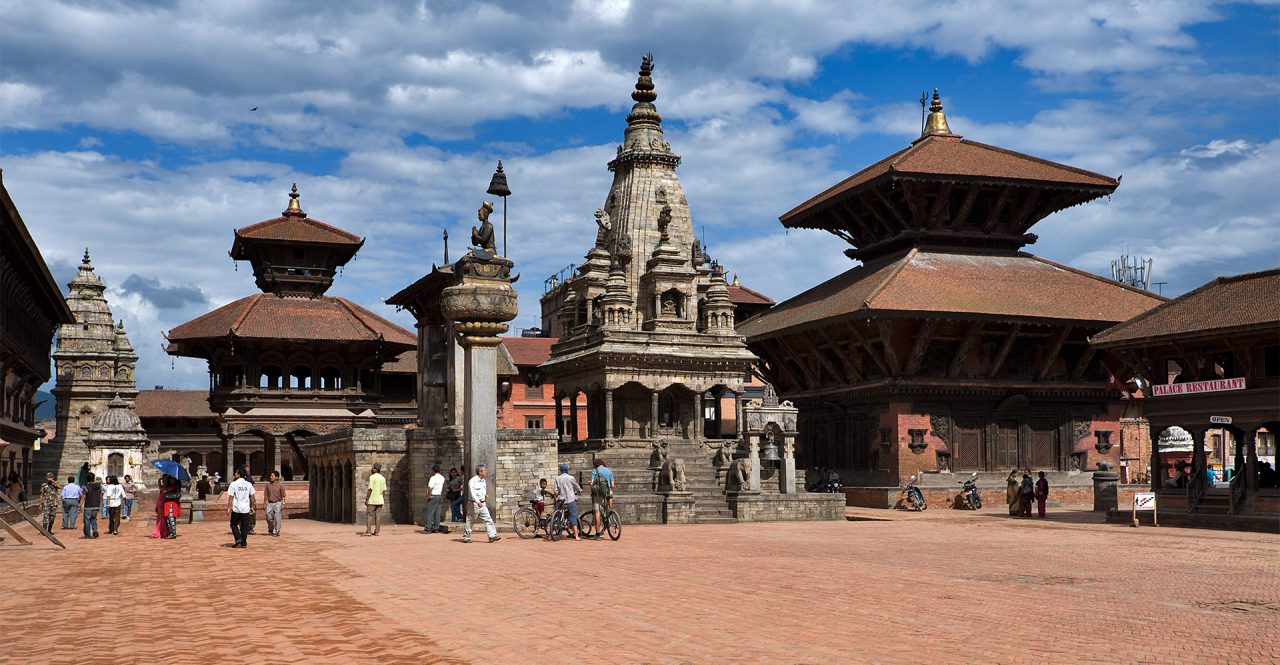
If you venture to understand Kathmandu through history, you might find yourself inside the globe of magical butterflies and moonbeams. Time does not pass linearly in a place where facts and fictions are inseparable. There are many stories about how Kathmandu came into being as there are people living in it. Out of many, one such story is how Lord Shiva and his consort Parvati in the form of deer were roaming in a forest by the Bagmati River, now the present Kathmandu.
They enjoyed and loved the environment to such an extent that it created an imbalance in the universe and became an issue among other gods to find and get them back in their usual forms and errands. Once he was found, Shiva finally agreed to leave, and decided that he would leave one of his horns on the bank of the Bagmati river, which is nowadays worshiped as a Shiva lingam in the Pashupatinath temple.
Another story (even science approves it) speaks of the Kathmandu valley being ‘One Big Lake’. But here fiction continues saying in the middle of the lake, a lotus flower started emerging and eventually blossomed. The lake and the lotus (as well as its surroundings) turned out to be so beautiful that a Buddhist priest, Manjushree, seeing it once, concluded that the area would be very suitable for human life. He cut a gorge in the Chobhar hill and let the lake drain out. In order to protect the lotus flower, he placed it on the top of a hill, which is now worshiped as the Swayambhu Hill. After a long time, when flower sank inside the hill, people of Kathmandu and devotees from all around built the Swayambunath Stupa in order to continue worshipping it.
Leaving behind the old stories and arriving back in this modern world, one can easily spot stones in Kathmandu by the alley that are regularly and traditionally worshiped. Those stones and idols have never been moved since the beginning of the time. If you ask ordinary people how old all those are, they will give you a confused, but a confident answer, “very old”.
The close connection of people with time and the history of the region is noticeable in every historical artifact of Kathmandu, be it temples or castles. People still claim that one can hear Shiva’s laughter in the burbling of the river Bagmati in the monsoon season. Deer still roam around in the forest above the Pashupatinath Temple, and those species are still considered pious and holy. People of the Kathmandu enjoy an even more personal relationship with the Kathmandu’s past. The soil that was once the bed of the Kathmandu Lake is the foundation upon which the city rests today. The houses (especially the old houses in the valley) were built from red bricks made of the soil that was once at the bottom of the lake. The artistic clay pots and vessels used for storing food and water are made out of the soil, which is obliged to a Buddhist priest for its creation.
The rice planted in every monsoon season grows in abundance, thanks to the organic material left in the land of the once upon a time lake, making the land fertile. Every house, every grain of rice and every Nepalese for that matter, is a footprint of the valley’s most ancient past. It is no wonder that fact intertwines with fiction in Kathmandu’s collective consciousness..
Kathmandu Tour is designed for those who are visiting Kathmandu for a very short period of time. The 4-day Kathmandu Tour provides a close glimpse of the country with visits to plenty of UNESCO World Heritage Sites in Katmandu, Lalitpur (Patan) and Bhaktapur, which are all cities within the Kathmandu Valley. The trip not only showcases the rich culture of the Nepalese people but also takes you back in time through its architectural marvels. During this trip we will also visit Nagarkot, a village in the hills of Bhaktapur, which is an ideal place for stunning Himalayan views.
Note: Our itinerary is flexible and can be customized according to your interests and schedule.
Day 01: Sightseeing in Kathmandu: Kathmandu Durbar Square, Pashupatinath Temple, Swayambhunath and Bauddhanath
Day 02: Sightseeing in Patan and Bhaktapur and Sunrise or Sunset views from Nagarkot
Day 01: Sightseeing in Kathmandu: Swayambhunath Stupa and Patan city
After breakfast, we begin our sightseeing tour by visiting UNESCO World Heritage Sites within Kathmandu.
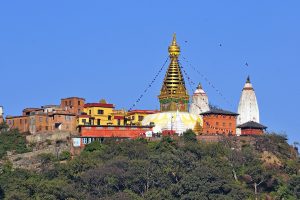 Swayambhunath Stupa: Generally a holy memorial site, the Swayambhu Nath Stupa represents a typical Buddhist architecture. Its main features are the white dome identified with a spotless pure jewel representing enlightenment and a thirteen tiered golden spire in conical shape surmounted on the dome, representing the different stages before enlightenment. Painted on all four sides of the stupa and overlooking the entire Kathmandu valley is the mystical eyes of the Buddha.
Swayambhunath Stupa: Generally a holy memorial site, the Swayambhu Nath Stupa represents a typical Buddhist architecture. Its main features are the white dome identified with a spotless pure jewel representing enlightenment and a thirteen tiered golden spire in conical shape surmounted on the dome, representing the different stages before enlightenment. Painted on all four sides of the stupa and overlooking the entire Kathmandu valley is the mystical eyes of the Buddha.
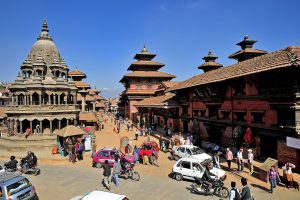 Patan: Patan city, located on a lovely little plateau across the river Bagmati is only 7 km. south east of Kathmandu. This city roughly inhabited by some 4 – 5 hundred thousands people is considered oldest of all the three cities in the Kathmandu valley. This city was founded in 3rd century A.D. by King Veera Dev and has the distinction of being the home of the finest Newar Crafts since time immemorial
Patan: Patan city, located on a lovely little plateau across the river Bagmati is only 7 km. south east of Kathmandu. This city roughly inhabited by some 4 – 5 hundred thousands people is considered oldest of all the three cities in the Kathmandu valley. This city was founded in 3rd century A.D. by King Veera Dev and has the distinction of being the home of the finest Newar Crafts since time immemorial
Day 02: Sightseeing in Pashupatinath temple, Boudhanath stupa and Bhaktapur
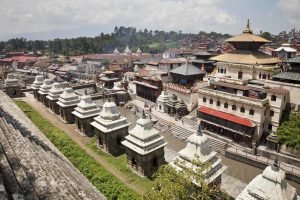 Pashupatinath: The Pashupati Nath temple stands as a symbol of unity and has a rare unifying force that it exerts among people of the region. This is the holiest of all Shiva shrines in Nepal and is one of South Asia’s most important pilgrimages for Hindu Pilgrims. “Pashu” means living things and “Pati” means master. Lord Shiva is known by many different names e.g. Shambhu, Bhole Baba, Shankar, Pashupati etc. Pashupati Nath was declared a World Heritage Site by UNESCO.
Pashupatinath: The Pashupati Nath temple stands as a symbol of unity and has a rare unifying force that it exerts among people of the region. This is the holiest of all Shiva shrines in Nepal and is one of South Asia’s most important pilgrimages for Hindu Pilgrims. “Pashu” means living things and “Pati” means master. Lord Shiva is known by many different names e.g. Shambhu, Bhole Baba, Shankar, Pashupati etc. Pashupati Nath was declared a World Heritage Site by UNESCO.
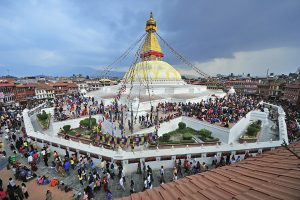 Boudhanath Stupa: The stupa said to have been built in the 5th century A D. The site is a Mecca for. Tibetan Buddhists and every year tens of thousands of pilgrims from all over the Himalayan region visit the Stupa. According to a very popular legend long time ago the kingdom of Kathmandu was under terrifying draught. King Dharma Deva was very worried. An astrologer advised him that only the sacrifice of an ideal man with 32 virtues in front of the dry royal water sprout could bring rain fall in the country. The following night, the King commanded his son to go to the dry water spout inside the royal palace compound at midnight and behead the person shrouded in white robe without looking at him. The prince obeyed his father. To his dismay, the prince realized that the beheaded man was his father, the King.
Boudhanath Stupa: The stupa said to have been built in the 5th century A D. The site is a Mecca for. Tibetan Buddhists and every year tens of thousands of pilgrims from all over the Himalayan region visit the Stupa. According to a very popular legend long time ago the kingdom of Kathmandu was under terrifying draught. King Dharma Deva was very worried. An astrologer advised him that only the sacrifice of an ideal man with 32 virtues in front of the dry royal water sprout could bring rain fall in the country. The following night, the King commanded his son to go to the dry water spout inside the royal palace compound at midnight and behead the person shrouded in white robe without looking at him. The prince obeyed his father. To his dismay, the prince realized that the beheaded man was his father, the King.
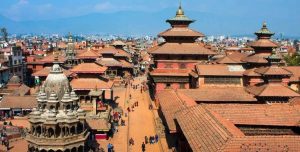 Bhaktapur: Situated at an altitude of 1,401 meters above sea level, Bhaktapur is a very unique old town. This city was founded by King Ananda Dev in 889 A.D. Bhaktapur is said to have been built in the shape of a Conch Shell-a sacred symbol of lord Vishnu. The word Bhaktapur means the city of devotees.
Bhaktapur: Situated at an altitude of 1,401 meters above sea level, Bhaktapur is a very unique old town. This city was founded by King Ananda Dev in 889 A.D. Bhaktapur is said to have been built in the shape of a Conch Shell-a sacred symbol of lord Vishnu. The word Bhaktapur means the city of devotees.
Before the unification of Nepal, Bhaktapur was an independent principality ruled by the Malla kings who were very much devoted to religion, culture and art. During that period, many magnificent temples and mansions were built. This period is remembered as a golden period in the history of Nepalese art. There are many monuments, squares and courtyards of historical significance.
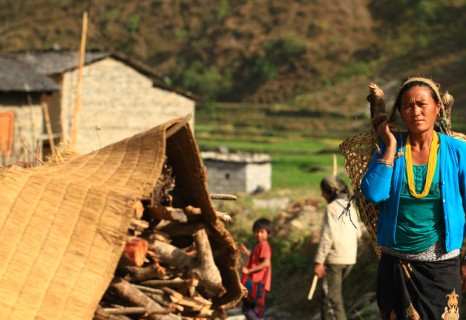

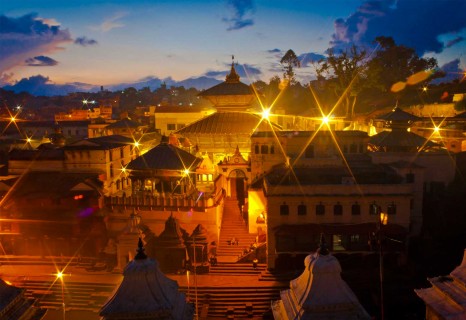
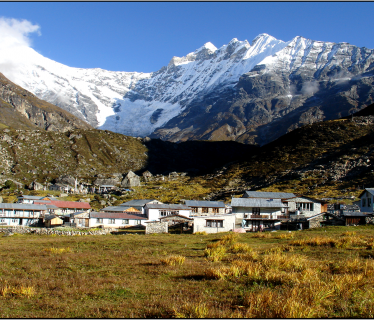
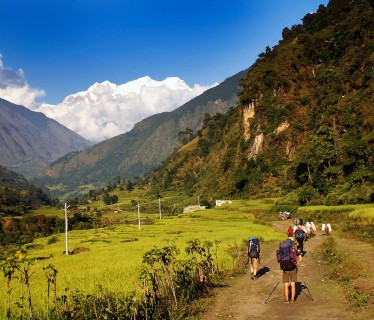

Snow Leopard Trek Pvt. Ltd. is a fully established company in operation since 1985 and registered in September 1987 with the Department of Tourism/Dept.
NAXAL, KATHMANDU, NEPAL P.O. Box: 1811
Tel: 977-1-4534632, 4534619, 4534560
Email:
snowleopardtreknepal@gmail.com
© Snow Leopard Trek (P) Ltd. 2024. | Site by: SoftNEP